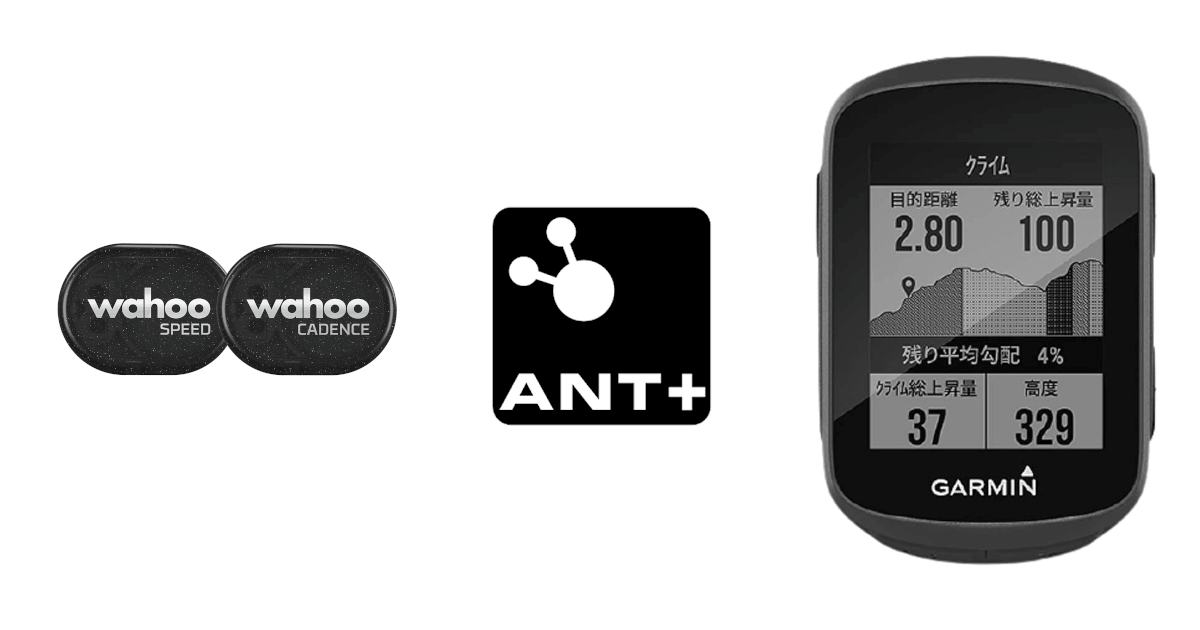What is the difference between ANT+ connection and Bluetooth?
ANT+ can be used with multiple devices simultaneously without pairing
ANT+ sensors used as a data source for speed, cadence, heart rate, etc. “only” emit ANT+ signals, so pairing is not required for the cycle computer side to receive ANT+ sensor data.
The connection to the sensor may be set to “pairing” on the cycle computer side, but this is only a setting for “which ANT+ sensor to use as a source of data,” and is different from Bluetooth pairing.
ANT+ is also used not only in cycle computers, but also in sports watches such as Garmin and smart rollers such as Wahoo, so one sensor and one bike can send data to multiple devices simultaneously.
The problem with ANT+ is that not many smartphones are compatible with it, but if you use an ANT+ compatible smartphone, you can log with multiple devices at the same time.
Bluetooth assumes “1:1 with paired device”.
Bluetooth connection, on the other hand, is a “1:1 pairing of device and sensor” method.
While paired to a specific device, the sensor cannot be received by another device (some Bluetooth devices can be registered to multiple devices), and if the pair is removed, the sensor data cannot be received.
If the cycle computer side or the sensor side is “Bluetooth connection only,” you will need to pair them each time.
Because Bluetooth is compatible with different devices, data reception may be intermittent or the cycle computer may lose sight of the sensor.
Both cycle computers and sensors should be ANT+ compatible models.
Thus, ANT+ is a connection standard with many advantages when used with cycle computers.
For cycle computers and sensors, the most common method is “smartphone and Bluetooth, sensor and ANT+” for cycle computers, and “smartphone and Bluetooth, cycle computer or smartwatch and ANT+” for sensors. In this sense, ANT+ is a must for a sensor if it is to be used with a cycle computer.
A cycle computer with only ANT+ may not be able to synchronize with a smartphone or display notifications from a smartphone, but the sensor only needs to be able to receive data, so there is no problem in using a cycle computer with only ANT+.
Many recent cycle computers and sensors support both ANT+ and Bluetooth, but some older or inexpensive cycle computers and sensors support only one or the other, so if you are wired for ease of use as a cycle computer, it is best to use a cycle computer that supports both ANT+ and Bluetooth. If you want a cycle computer that is wired for ease of use as a cycle computer, it is best to choose a cycle computer/sensor that supports the ANT+ standard.
Currently, the only choice is “Bluetooth & ANT+ sensors”.
From a long-term perspective, Bluetooth is more likely to be the “long-lasting standard,” as it is used universally not only for smartphones and PCs, but also for headphones and controllers.
Whether the industry will go the ANT+ route or integrate with Bluetooth depends on future trends, but the trend toward Bluetooth is becoming stronger in the bicycle parts industry, as Shimano’s Di2 now supports Bluetooth.
At present, we do not know what the future trend will be, so we should choose a sensor that can be used with both Bluetooth and ANT+, regardless of which way it goes.
